What is Pashmina?
A Fibre of Legends
Pashmina is the world’s finest and most luxurious natural fibre, hand-spun from the soft undercoat of the Changthangi goat found in the high-altitude regions of the Kashmir region of Ladakh, India. For centuries, it has been woven in Kashmir into shawls and stoles treasured by royalty, nobility, and collectors around the world. Known as the “diamond fibre,” Pashmina embodies both elegance and rarity.
Pashmina vs. Cashmere vs. Wool
- Cashmere: All Pashmina is cashmere, but not all cashmere is Pashmina. Pashmina fibres measure just 12–15 microns, finer and softer than standard cashmere (16–19 microns)
- Wool: Wool fibres are much thicker (25–40 microns), making them heavier and coarser. Pashmina is lighter yet warmer, with an unmatched softness against the skin
Why Pashmina is Rare
Authentic Pashmina can only be made in Kashmir, where generations of artisans have preserved the skill of spinning and weaving this delicate fibre. Because it cannot be mass-produced, every piece is one of a kind, carrying the soul of its artisan and the heritage of Kashmir.
How to Identify Authentic Pashmina
- Feels featherlight yet warm
- Fibres are fine, slightly uneven (a sign of hand-spinning)
- Never perfectly uniform like machine-made cashmere
Pashmina is more than a fabric — it is a living heritage. From the windswept plateaus of Ladakh to the handlooms of Kashmir, every thread carries centuries of tradition, artistry, and devotion. Unlike mass-produced textiles, each Pashmina is one of one — impossibly soft, impossibly warm, and destined to become a timeless heirloom. To own Pashmina is to embrace not just luxury, but a story woven through generations.
How Pashmina is Made:
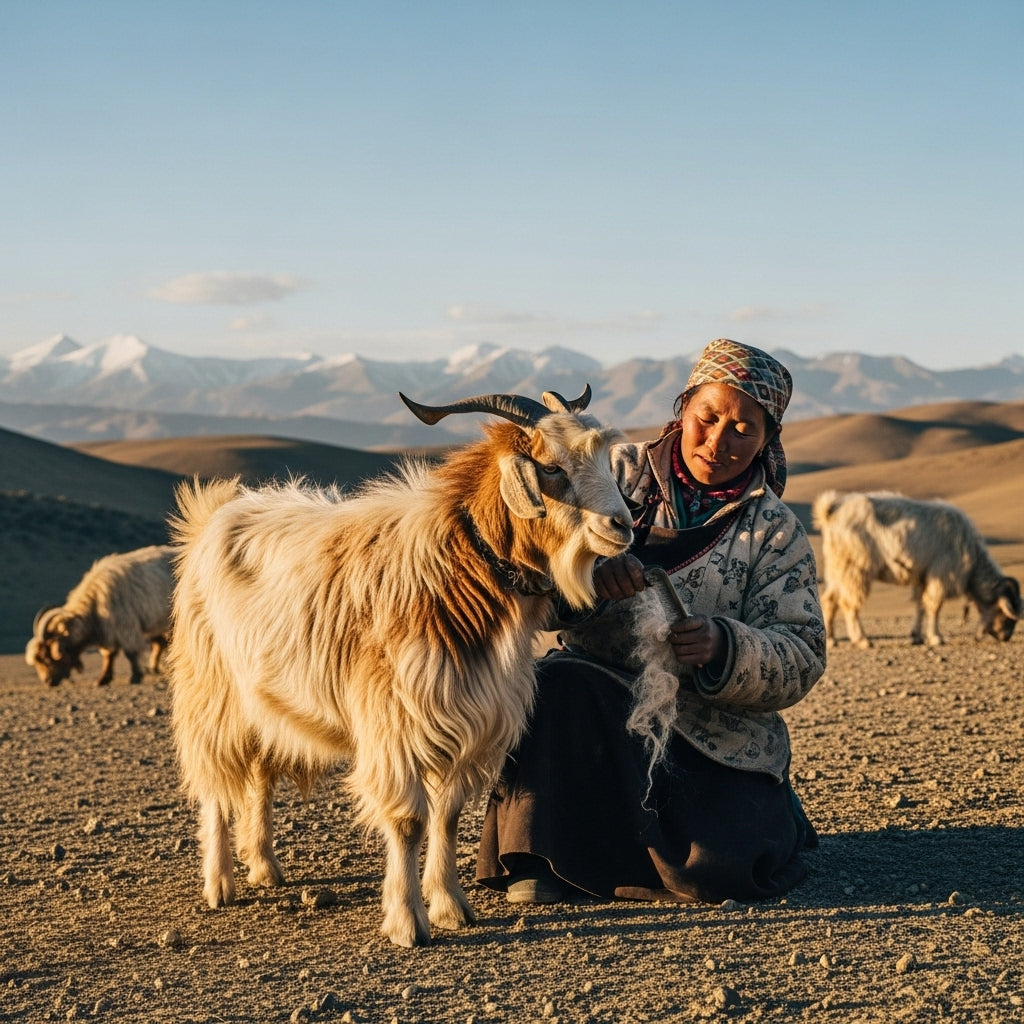
Step 1
Collection of Pashmina
In early Spring, high in the Himalayas of Ladakh in the Kashmir region, the Changthangi goats begin to moult their fine undercoat. Rather than shearing, herders gently comb the goats during this natural moult, carefully drawing out the downy fibres by hand. This slow, tender process not only ensures the well-being of the animal but also preserves the pristine softness of the fibres that become true Pashmina.
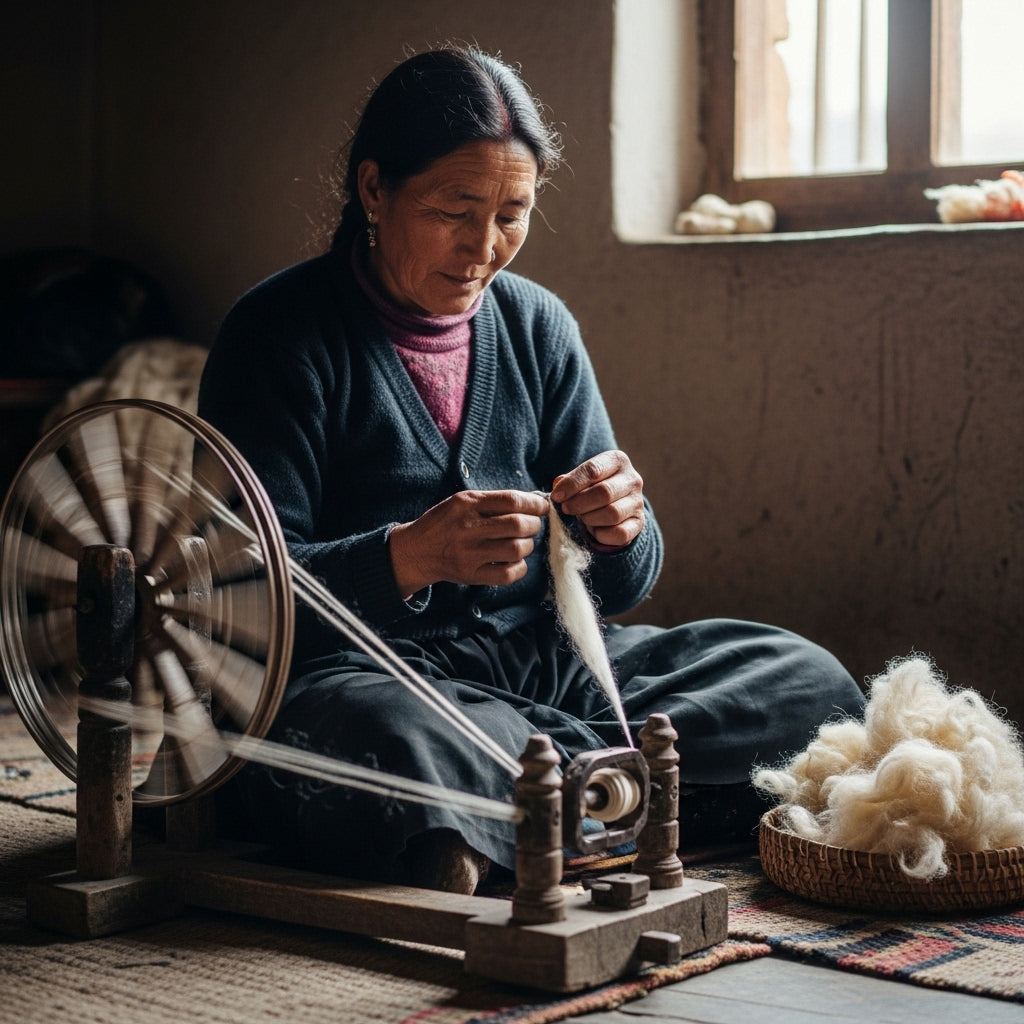
Step 2
Spinning
Once collected, the raw fibres are cleaned and hand-spun by local women artisans using a traditional wooden spinning wheel (yinder). This delicate process transforms fragile threads into strong, continuous yarn, often done in quiet, rhythmic motion passed down through generations.
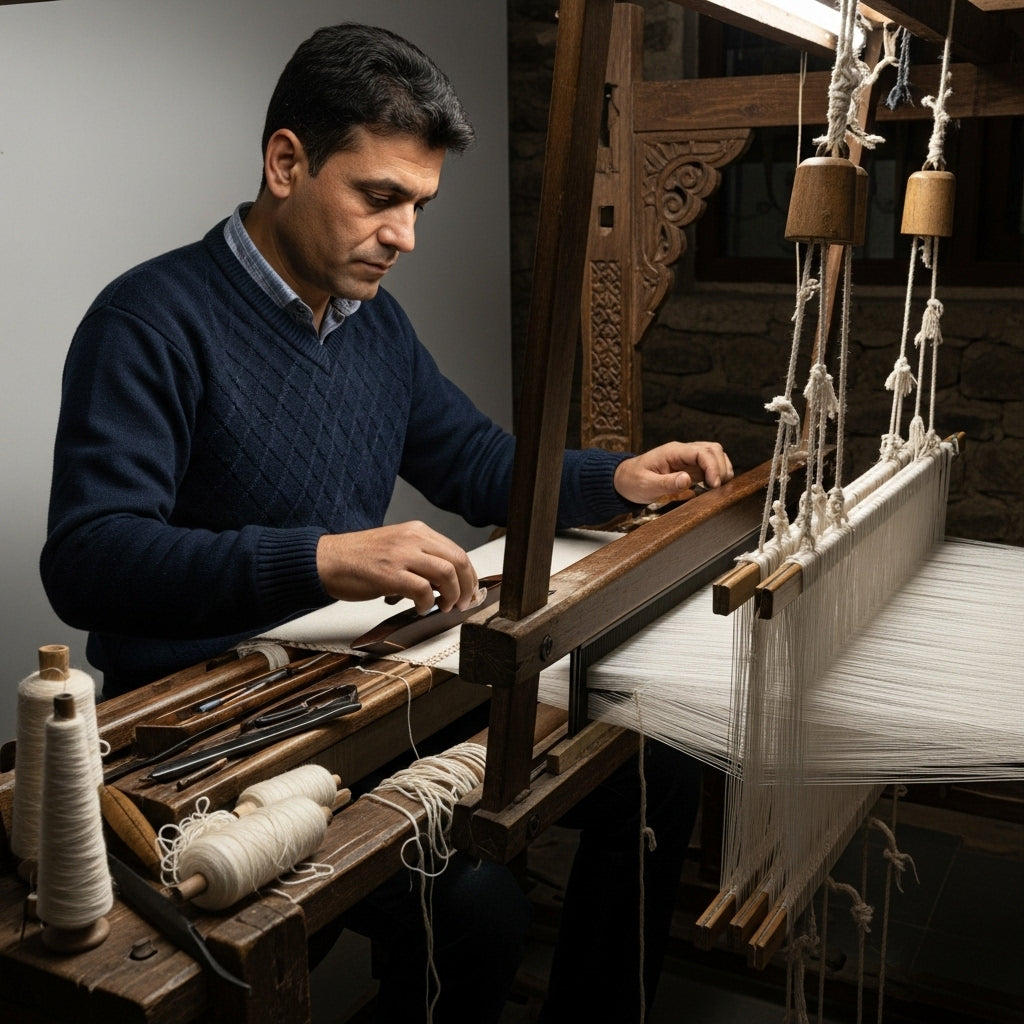
Step 3
Weaving
The spun yarn is then entrusted to master artisans who work on wooden handlooms. Each shawl is woven with precision, requiring immense patience. Depending on the design, it can take weeks or even months to produce a single flawless base fabric.
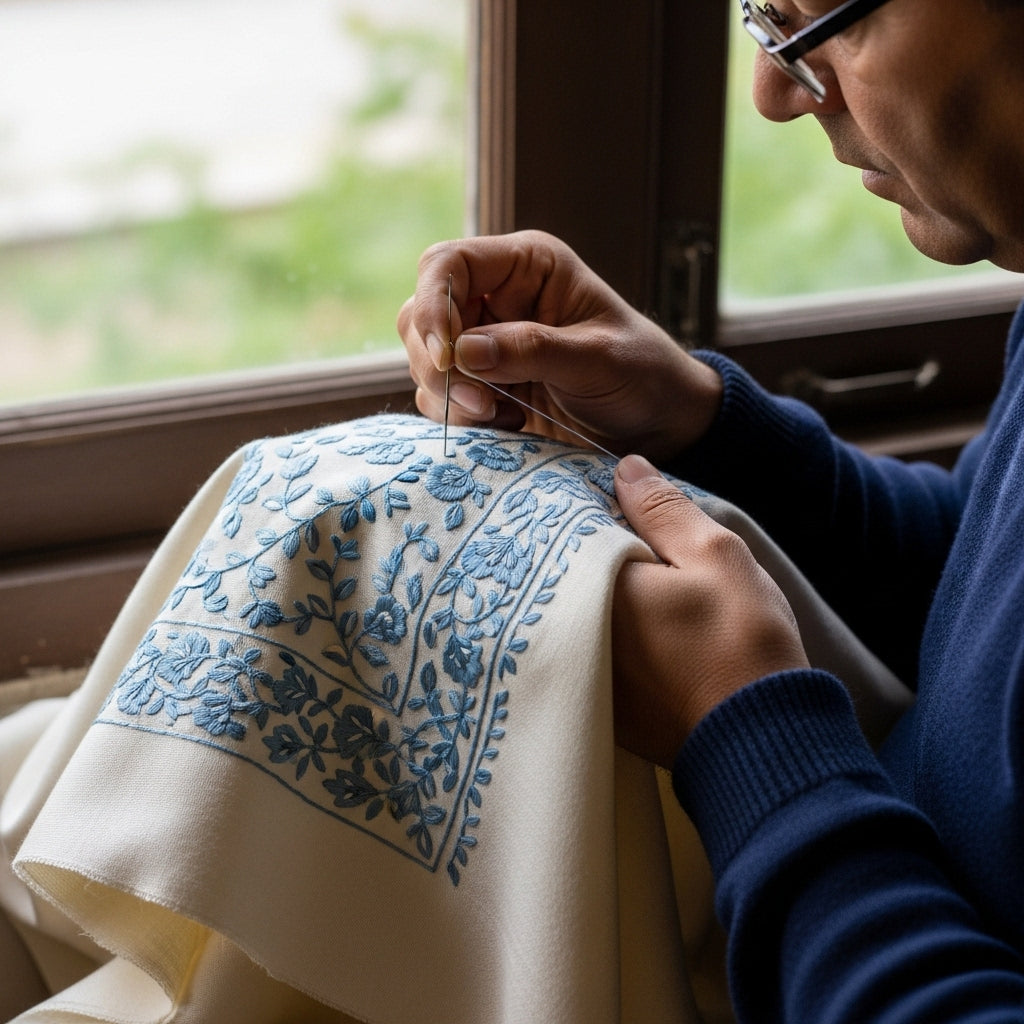
Step 4
Embroidery
Some Pashminas are left pure in their simplicity, while others are elevated further with intricate hand-embroidery. Using techniques such as Sozni (fine needlework), Tilla (gold or silver threadwork), or Kalamkari (hand-painted art), artisans add motifs that can take additional months—turning the shawl into a true heirloom piece.
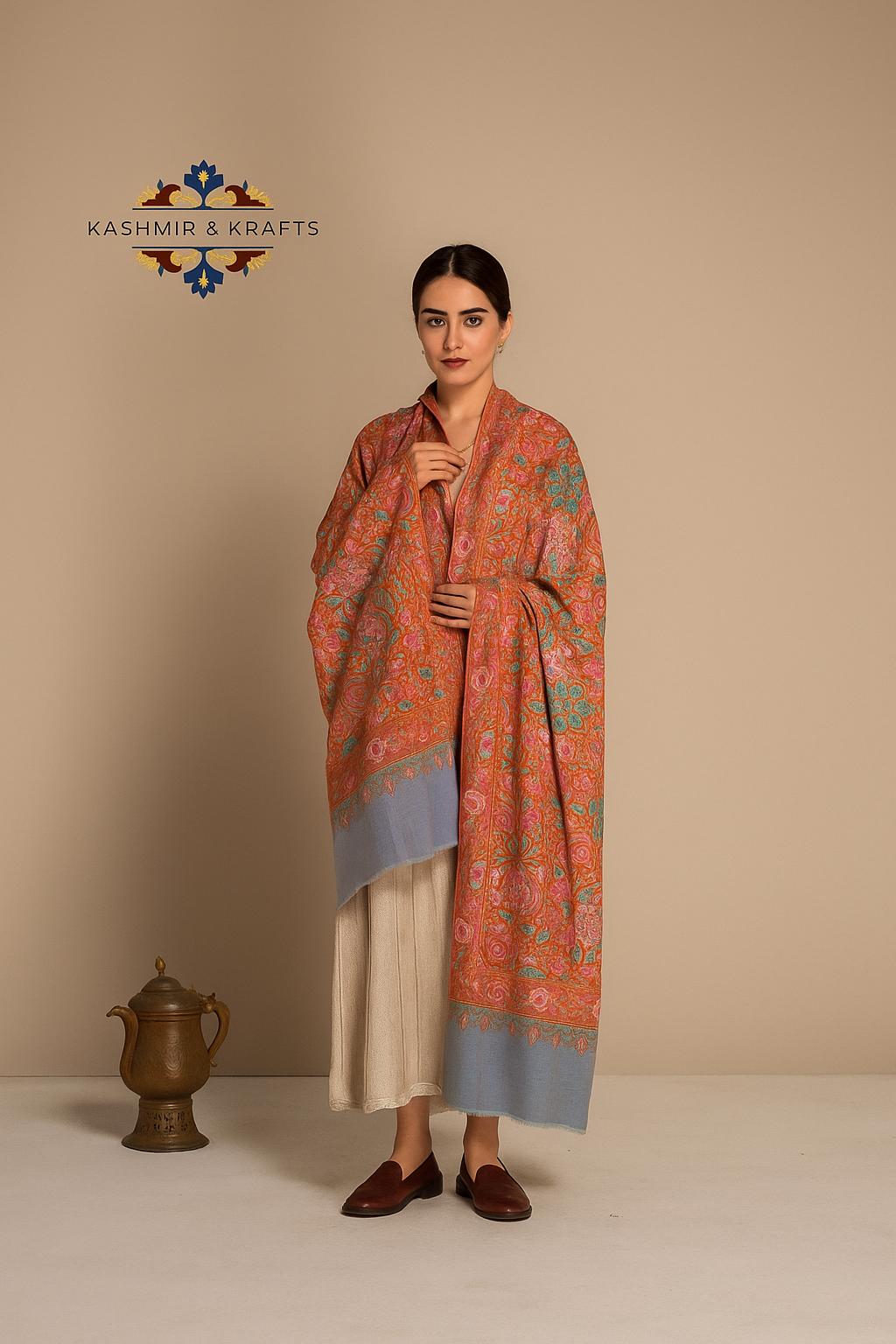
Step 5
Observe the beauty
What began as the softest down combed from Himalayan goats now stands complete—a handwoven Pashmina shawl. Each piece is museum-worthy, the result of months or even years of devotion, and remains a true one-of-one. Draped in its entirety, it carries the story of heritage and craftsmanship, transforming patience, precision, and artistry into timeless elegance.
